We’ve all been there – one moment of clumsiness and bam. You’re left with a deep cut. It’s the kind of situation where you’re desperate for a solution, especially if getting to a doctor isn’t an option. And that’s when the idea of using crazy glue to seal up that wound starts creeping into your mind.
But before you grab that bottle of sticky stuff, it’s important to weigh the pros and cons of relying on crazy glue for cuts. Sure, crazy glue, also known as cyanoacrylate adhesive, might seem like a nifty fix, but its effectiveness in wound care is still up for debate among both medical experts and everyday healers.
Benefit 1: Instant Closure
One undeniable perk of using crazy glue on cuts is its ability to create an immediate and sturdy seal. Unlike fumbling around with bandages or sutures that require steady hands, crazy glue can bridge that gap in no time, stopping the bleeding right in its tracks.
Benefit 2: Penny-Pinching Option
Another appealing aspect of turning to crazy glue for minor cuts is its wallet-friendly nature. Specialized adhesive products designed specifically for wound closure can cost a pretty penny, while a small bottle of trusty old crazy glue can be found lurking in most households at a fraction of the price.
Drawback 1: Hinderance to Natural Healing
While crazy glue may swiftly close up a wound, one downside is that it could interfere with the body’s natural healing process. Our skin has its own way of fixing itself by generating new cells. But when we slap some glue on that cut, we might unintentionally block oxygen and nutrients from reaching the area, slowing down tissue regeneration and prolonging recovery time.
Drawback 2: Skin Sensitivity Struggles
Here’s the deal – cyanoacrylate adhesives, including our beloved crazy glue, can irritate some people’s skin and even trigger allergic reactions. So before you go gluing yourself together, it’s crucial to consider your own skin’s sensitivity. If you notice any redness, swelling, or discomfort after applying the glue, it’s time to remove it and consult a healthcare professional for further guidance.
What is Crazy Glue?
Contents
- 1 What is Crazy Glue?
- 2 Is Crazy Glue Safe for Cuts?
- 3 Potential Risks of Using Crazy Glue on Cuts
- 4 Alternative Solutions to Treat Cuts
- 5 Proper Wound Care Techniques
- 6 Cleaning and Disinfecting the Wound
- 6.1 Step 1: Handwashing – The Canvas Preparation
- 6.2 Step 2: Gently Rinse with Running Water – The First Brushstroke
- 6.3 Step 3: Mild Soap or Saline Solution – The Artful Cleansing
- 6.4 Step 4: Pat Dry – The Gentle Blotting Technique
- 6.5 Step 5: Disinfecting – Adding the Finishing Touches
- 6.6 Step 6: Let it Sit – Allowing the Magic to Happen
- 6.7 Step 7: Protect and Promote Healing – Framing the Masterpiece
- 7 Signs of Infection to Look Out For
- 8 When to Seek Medical Attention for Cuts
- 9 Conclusion
When it comes to repairing broken objects or bonding different materials together, you need an adhesive that is not only strong but also versatile. Enter Crazy Glue, a renowned brand of cyanoacrylate glue that has captured the hearts of DIY enthusiasts and professionals alike. In this article, we will explore the fascinating world of Crazy Glue, diving into its unique properties, wide range of applications, and addressing the misconceptions about its use on cuts or wounds.
Properties and Applications:
At the heart of Crazy Glue lies its secret ingredient – ethyl cyanoacrylate. This transparent liquid undergoes a magical transformation when it encounters moisture, solidifying into an exceptionally strong bond. Its versatility knows no bounds, as it can securely adhere ceramics, glassware, plastics, metals, wood, and rubber. With its low viscosity, Crazy Glue effortlessly flows into tiny cracks and crevices, allowing for precise application and thorough bonding.
Rapid Curing Time:
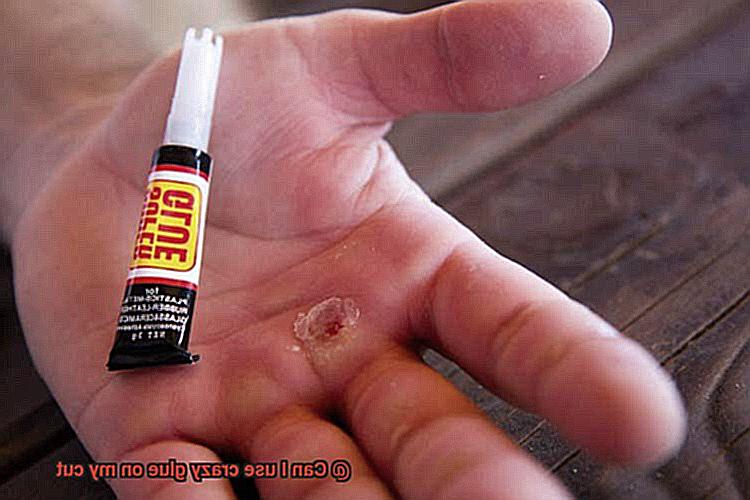
One of the standout features of Crazy Glue is its lightning-fast curing time. Within seconds or minutes after application, the adhesive sets, enabling projects to be completed in a fraction of the time required by traditional glues. However, it’s important to note that while the glue may appear dry on the surface, it may take several hours to reach its maximum strength.
The Misconception about Using Crazy Glue on Cuts:
Despite its impressive bonding capabilities, it is crucial to dispel the misconception that Crazy Glue can be used as a quick fix for cuts or wounds. Contrary to popular belief, Crazy Glue is not intended for medical use and should never be applied to open cuts or wounds. Doing so can result in skin irritation, delayed healing, increased risk of infection, and potential introduction of foreign substances or bacteria into the wound.
Proper Wound Care:
In the event of a cut or wound, seeking proper medical attention is of utmost importance. A healthcare professional can assess the severity of the injury and provide appropriate care, such as cleaning, suturing, or using medical adhesive specifically designed for wound closure. In situations where immediate medical help is not accessible, it is vital to adhere to proper wound care techniques: cleanse the area with mild soap and water, apply over-the-counter antibiotic ointment, and cover it with a sterile bandage. Monitor the wound closely for any signs of infection and consult a healthcare professional if concerns or complications arise.
Is Crazy Glue Safe for Cuts?
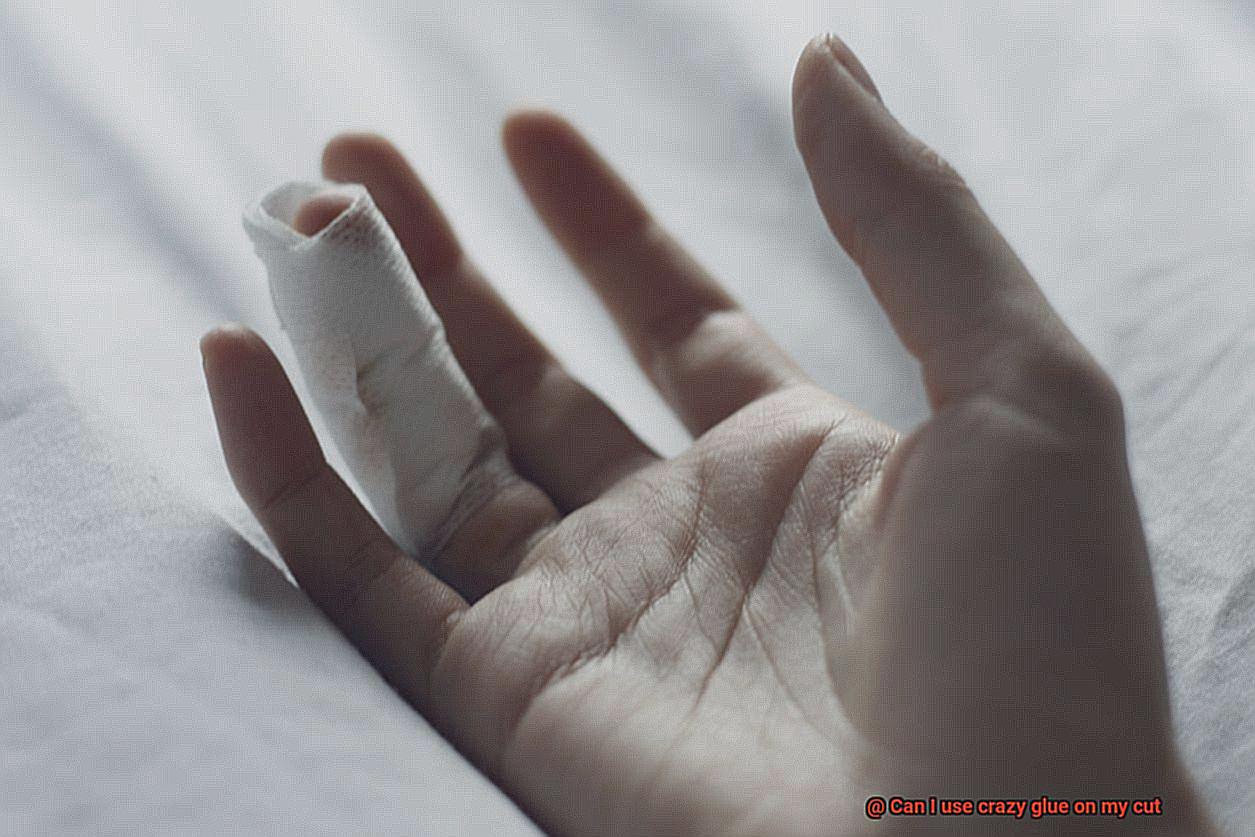
We’ve all been there – a minor cut that needs sealing, and Crazy Glue seems like the quick fix we need. But hold on tight, because I’m here to spill the beans on why using Crazy Glue on cuts is a big no-no.
Let’s start with the basics. Crazy Glue, also known as cyanoacrylate adhesive, is a powerful adhesive that can bond almost anything together at lightning speed. It’s perfect for fixing broken objects or even sealing small cuts, right? Wrong.
The main concern here is safety. Medical professionals strongly advise against using Crazy Glue on cuts, and for good reason. Crazy Glue is not designed to be used on the skin, especially on open wounds. Applying it to cuts can lead to a variety of complications that you definitely want to avoid.
First off, there’s the risk of adverse reactions. Crazy Glue can cause irritation, allergic reactions, or even chemical burns when applied to the skin. Ouch. Definitely not what you want when you’re already dealing with a pesky cut.
But that’s not all – Crazy Glue is not sterile. This means that if you apply it to a cut, you run the risk of introducing bacteria or other contaminants into the wound. And do we really want to increase the chances of infection? Absolutely not.
So what should you do instead? Well, it’s pretty simple. For minor cuts or abrasions, clean the wound with mild soap and water, apply an over-the-counter antiseptic ointment, and cover it with a sterile bandage. Easy peasy.
But wait, what if your cut is deeper or more severe? In that case, don’t hesitate – seek professional medical attention. Medical professionals have the expertise and equipment to properly clean and treat your wound, stitch it up if necessary, and prevent any potential infections.
Remember, safety always comes first. It’s better to be cautious and rely on medically approved methods for wound care rather than resorting to potentially harmful alternatives like Crazy Glue. So, let’s keep Crazy Glue for fixing objects and leave the wound healing to the experts.
Potential Risks of Using Crazy Glue on Cuts
When faced with a small cut, it can be tempting to reach for a quick fix like Crazy Glue. However, this seemingly convenient solution can come with potential risks. While Crazy Glue is effective for fixing objects, it is not designed for delicate skin. In this article, we will explore the potential dangers associated with using Crazy Glue on cuts, empowering you to make informed decisions when addressing wounds.
Allergic Reactions:
Surprisingly, some individuals may be allergic to Crazy Glue. Even if you have used it before without any issues, applying it to a cut can trigger an allergic reaction. Symptoms can range from redness and swelling to the formation of blisters around the wound. It is crucial to consider these potential consequences before resorting to Crazy Glue.
Infection Risk:
Despite its ability to create a firm seal, using Crazy Glue on a cut can actually increase the risk of infection. The seal formed by the adhesive can trap bacteria and other harmful microorganisms inside the wound, hindering the natural healing process. To prevent infections, it is recommended to keep cuts clean and covered instead of relying on glue.
Deep Wounds and Medical Attention:
Crazy Glue should never be used on deep or puncture wounds. Doing so can impede proper wound healing and necessitate medical intervention. Deep cuts often require stitches or specialized wound closure techniques that only healthcare professionals can provide. When in doubt, seeking professional medical attention is always the safest option.
Chemical Exposure:
It is important to note that Crazy Glue contains chemicals that are not intended for contact with the human body. Although small amounts are unlikely to cause harm, repeated exposure or using large amounts can lead to adverse effects. These effects may include dizziness, headaches, and respiratory problems. To minimize unnecessary exposure to these chemicals, it is best to avoid using Crazy Glue on cuts altogether.
Interference with Medical Evaluation:
Using Crazy Glue on a cut can make it challenging for healthcare professionals to evaluate and treat the injury effectively. The adhesive may obscure the severity of the wound, making it harder for them to determine the most appropriate course of action. It is crucial to keep in mind that DIY solutions might hinder professional care, potentially compromising your overall well-being.
Removal Challenges:
Once Crazy Glue has been applied to a cut, removing it can be a daunting task. The adhesive forms a strong bond that often requires harsh chemicals or mechanical force for removal. This process can cause further skin irritation or injury, leading to increased discomfort and potential complications.
Alternative Solutions to Treat Cuts
While crazy glue may seem like a quick fix, there are some important considerations to keep in mind. For starters, crazy glue is not designed for medical use and may contain chemicals that can irritate the skin or cause allergic reactions. This can lead to complications and delay the healing process.
In addition, crazy glue lacks the sterility of medical-grade adhesive, increasing the risk of infection when applied to a cut. Proper wound healing requires moisture and oxygen exchange, which may be hindered by an airtight seal created by crazy glue. This can result in delayed healing or complications.
Furthermore, if the cut is deep or in an area prone to movement, such as joints, using crazy glue may not provide sufficient support or stability. Seeking medical attention for appropriate wound closure techniques is advisable in such cases.
Instead of reaching for crazy glue, consider alternative solutions such as natural antiseptics like honey or tea tree oil. Honey has been used for centuries due to its antibacterial properties, while tea tree oil is known for its antimicrobial and anti-inflammatory effects. These substances can help prevent infection and promote healing.
Other options include over-the-counter wound care products like adhesive bandages or liquid bandages. These create a protective barrier over the wound, preventing dirt and bacteria from entering while allowing the wound to breathe.
Proper Wound Care Techniques
Proper wound care techniques are essential for promoting healing and preventing infection. When it comes to treating cuts and wounds, using crazy glue is not recommended. While it may seem like a convenient solution, there are several reasons why it is not a safe or effective method.
Firstly, crazy glue was not designed for medical use. It may be great for sticking things together, but when it comes to your precious skin, it’s a no-go. The chemicals in crazy glue can actually irritate your skin and slow down the healing process. We definitely don’t want anything hindering the healing process, right?
Secondly, using crazy glue on a cut can make life difficult for healthcare professionals. When you seek medical attention for a cut, doctors and nurses need to properly examine the wound to determine the best course of action. But if your cut is sealed shut with crazy glue, it becomes harder for them to clean and assess the wound effectively. We definitely don’t want anything hindering their ability to help us heal.
Additionally, using crazy glue on a cut can increase the risk of infection. Proper wound care involves cleaning the wound thoroughly and covering it with an appropriate dressing. This creates a barrier against potential bacteria invaders. However, crazy glue doesn’t provide that protective shield. Instead, it can trap bacteria inside the wound, giving those little troublemakers a cozy place to party.
Furthermore, crazy glue can interfere with the natural healing process. Our bodies are pretty amazing at healing themselves, but they need a little help from us too. Proper wound care involves keeping the area clean and moist, allowing those magical healing processes to work their wonders. Crazy glue, on the other hand, creates a barrier that prevents necessary moisture from reaching the wound. It’s like trying to grow a garden without water – not exactly a recipe for success.
So, my fellow wound warriors, let’s leave the crazy glue for arts and crafts, shall we? When it comes to proper wound care, stick to the tried-and-true methods. Clean the wound thoroughly, cover it with an appropriate dressing, and seek medical attention if needed. And if you’re looking for some natural alternatives, honey and tea tree oil have got your back. They’re like the superheroes of wound healing.
Cleaning and Disinfecting the Wound
When it comes to wound care, cleaning and disinfecting the wound is the foundation for a beautiful healing process. Just like an artist meticulously prepares their canvas, we must follow specific steps to ensure a masterpiece. In this article, we will explore the art of cleaning and disinfecting wounds, equipping you with the knowledge and tools to become a wound care Picasso.
Step 1: Handwashing – The Canvas Preparation
Before beginning this artistic journey, wash your hands thoroughly with soap and water or use hand sanitizer. Just as an artist cleans their brushes, this step ensures that no additional bacteria or contaminants are introduced to the wound during the cleaning process.
Step 2: Gently Rinse with Running Water – The First Brushstroke
Imagine water flowing over a canvas, gently washing away any impurities. Similarly, start by rinsing the wound under clean running water. Avoid harsh antiseptics like hydrogen peroxide or alcohol, as they can damage healthy tissue and hinder the healing process. Instead, let the pure flow of water cleanse the wound like an artist’s brushstroke.
Step 3: Mild Soap or Saline Solution – The Artful Cleansing
Now it’s time to create a gentle cleansing solution. Mix mild soap with water or use a saline solution. Apply this solution to a clean cloth or sterile gauze pad and gently cleanse the wound. Use delicate strokes to remove any debris or dirt, ensuring your masterpiece is free from imperfections.
Step 4: Pat Dry – The Gentle Blotting Technique
Just as an artist gently blots excess paint from their canvas, pat the wound dry with a clean towel or sterile gauze. Avoid rubbing the area, as it may cause further damage or irritation. We want to promote healing, not create chaos. So, gently blot and let the wound breathe.
Step 5: Disinfecting – Adding the Finishing Touches
Now that the canvas is clean and dry, it’s time to add the finishing touches. Choose an over-the-counter antiseptic solution or a gentle saline solution. Apply the chosen solution to a sterile gauze pad and dab it onto the wound, ensuring full coverage. This step adds vibrant colors to complete your masterpiece.
Step 6: Let it Sit – Allowing the Magic to Happen
To achieve the best results, let the antiseptic solution or saline sit on the wound for the recommended time specified by the product instructions. This allows the magic to happen as any remaining bacteria are effectively eliminated, leaving behind a pristine canvas for healing.
Step 7: Protect and Promote Healing – Framing the Masterpiece
After disinfecting, it’s time to protect the wound from further contamination and promote healing. Cover it with a sterile adhesive bandage or non-stick sterile dressing. This acts as a protective frame, keeping your masterpiece safe and allowing it to flourish as it heals.
Signs of Infection to Look Out For
When it comes to wounds, it’s important to keep a keen eye out for signs of infection. These pesky invaders can wreak havoc on your body if left untreated. So, let’s dive into the world of wound infections and explore the red flags you should be aware of.
First and foremost, redness and swelling are your body’s way of waving a caution flag. If your wound starts resembling a vibrant canvas of red or turns into a swollen balloon, it’s time to take notice. And if that redness and swelling begin to spread like wildfire, it’s a clear indication that infection may be taking hold.
Pain is another clue that something may be awry. While all wounds come with a certain level of discomfort, if your pain is pulling off superhero stunts and becoming more intense than expected, it could be a sign of infection. Bacteria love to irritate wounds, causing them to become extra sensitive.
Feeling warmth or heat around the wound? That’s not just a cozy embrace from your body. It might be the immune system springing into action, fighting off those unwelcome intruders with fiery determination. When the immune system goes to battle, it brings the heat – quite literally.
Now, let’s get down and dirty – pus and funky fluids. If your wound starts oozing pus or discharging any unpleasant substances, Houston, we have an infection. Pus acts like an unwelcome party crasher, bringing bacteria and tissue debris along with it. Definitely not cool.
And speaking of funky stuff, if your wound emits an odor that even the strongest air freshener can’t tackle, it’s time to take notice. Bacteria have decided to throw a stinky party in your wound, and it’s anything but pleasant.
Last but certainly not least, keep an eye out for systemic symptoms such as fever and feeling generally blah. Your body may be fighting off an infection superhero-style, raising its temperature and leaving you feeling like you’ve been hit by a truck.
When to Seek Medical Attention for Cuts
Accidents happen, and cuts are a common occurrence in our daily lives. While many minor cuts can be easily treated at home, it’s important to know when seeking medical attention is necessary.
Here, we’ll explore the signs and symptoms that indicate a cut may need professional care, the risks of not seeking medical attention, and when immediate attention is required.
Differentiating between Minor Cuts and Serious Wounds:
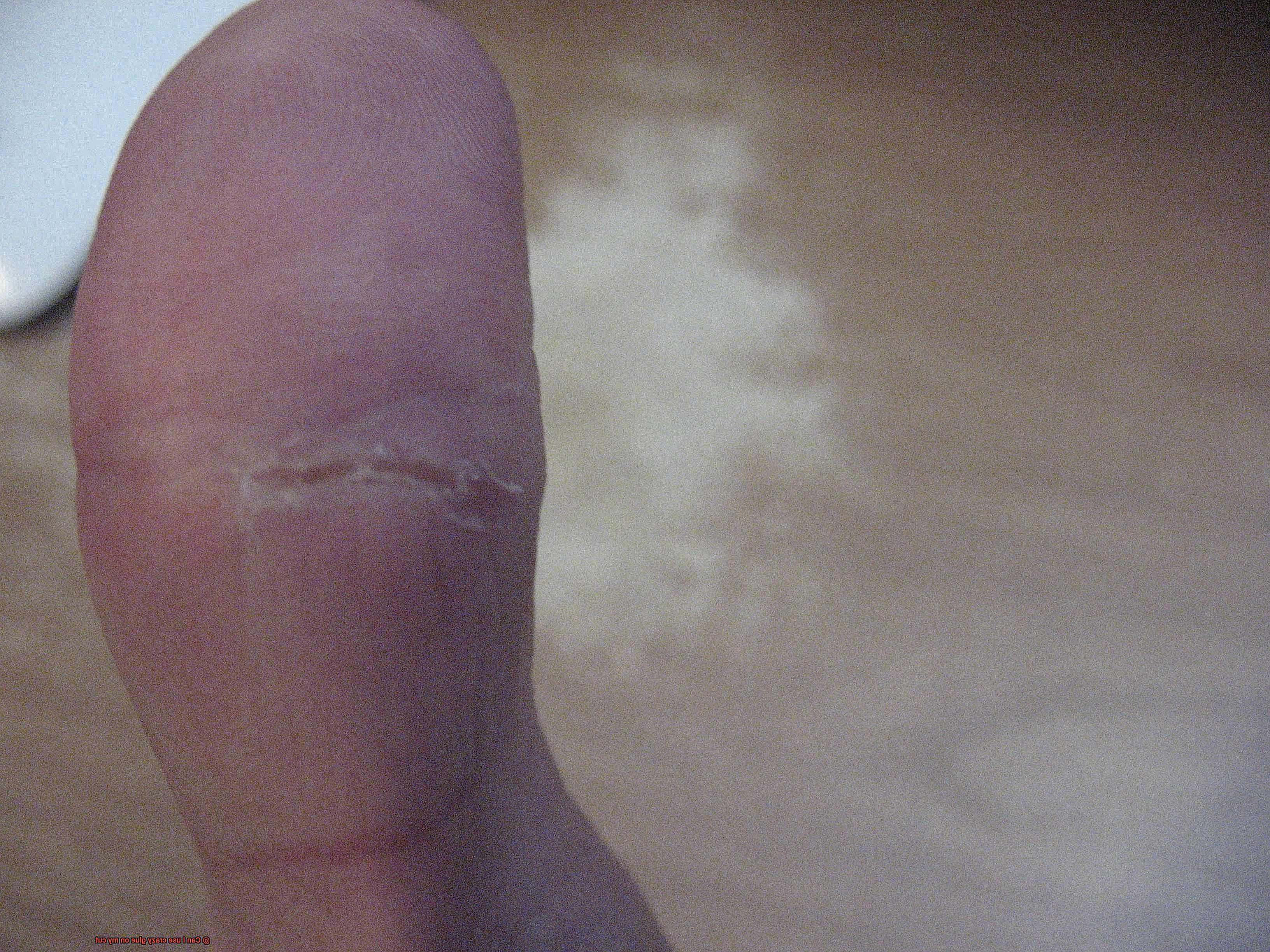
Firstly, it’s crucial to differentiate between minor cuts and more serious wounds. Minor cuts are typically shallow, small, and stop bleeding within a few minutes. These can usually be managed at home with proper care. However, if you notice any of the following signs, it’s time to seek medical attention:
- Excessive Bleeding: If the bleeding doesn’t stop or slows down after applying pressure for 10-15 minutes, it’s important to seek medical help.
- Deep Wounds: Cuts that expose underlying tissues or structures require professional evaluation and treatment.
- Wounds that won’t stop bleeding: If a cut continues to bleed heavily even after applying pressure, it may require stitches or other interventions.
- High-Risk Populations: Individuals with compromised immune systems or chronic conditions like diabetes should seek medical attention for even minor cuts due to the increased risk of infection.
Immediate Medical Attention:
Certain situations call for immediate medical attention:
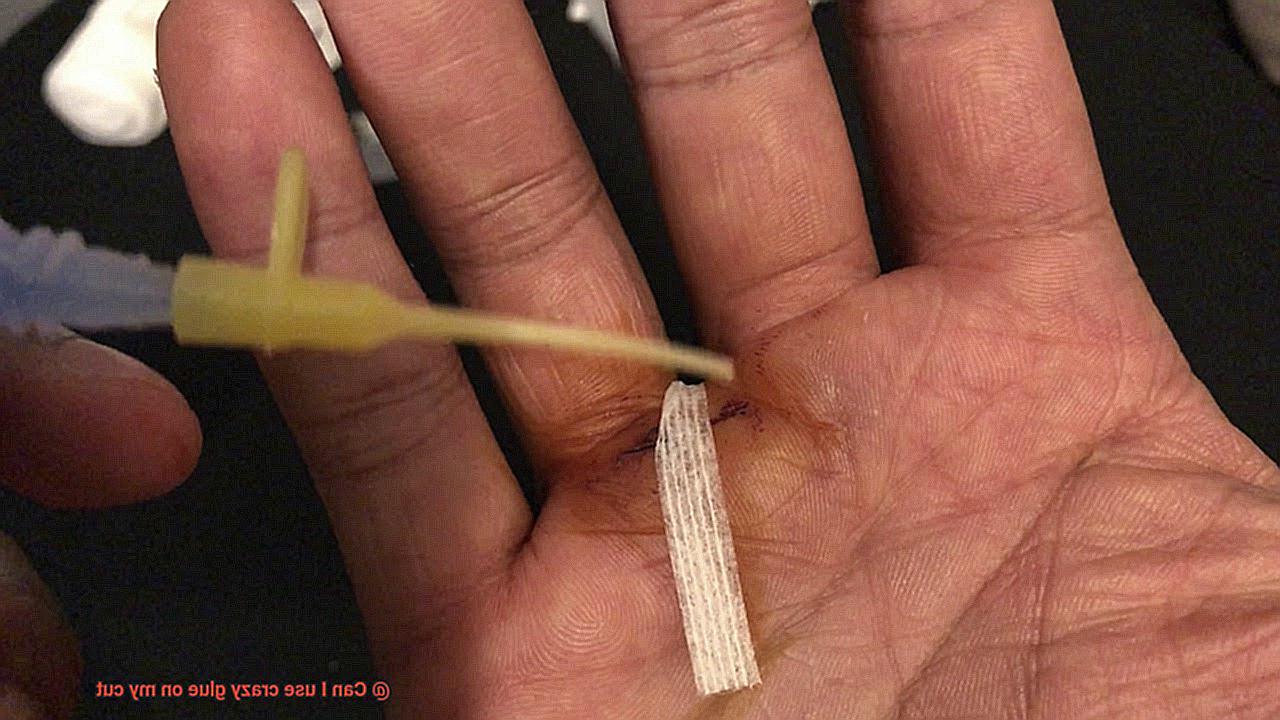
- Cuts on the Face: Facial cuts demand expert care to minimize scarring and ensure proper healing.
- Cuts near Vital Organs: Cuts near vital organs such as the chest or abdomen should be evaluated promptly by a medical professional.
- Cuts involving Large Blood Vessels: Cuts that involve major blood vessels can result in severe bleeding and require immediate intervention.
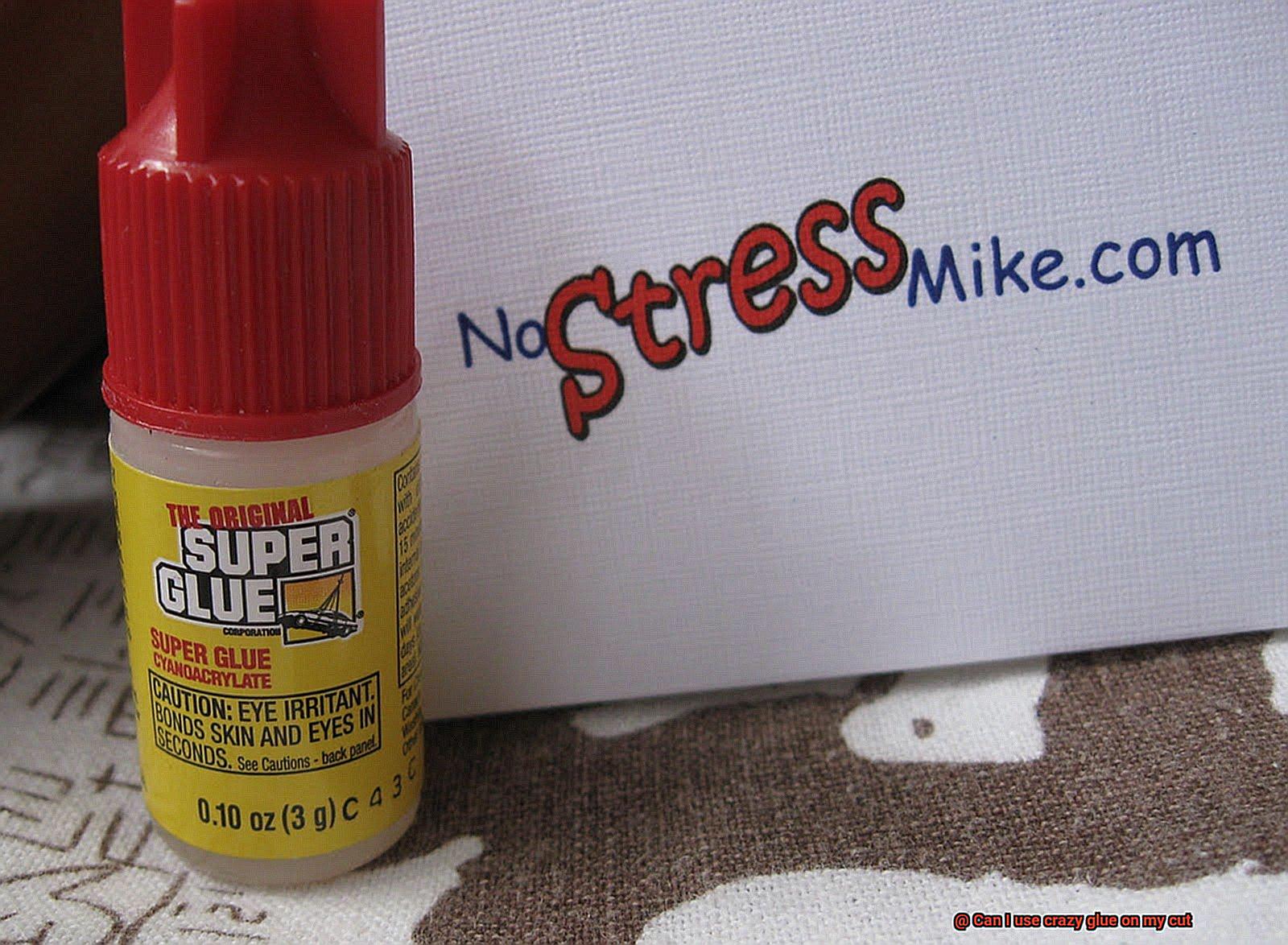
Additional Reasons to Seek Medical Attention:
It’s important to seek medical care for cuts caused by:
- Dirty or Rusty Objects: Cuts from these objects can lead to tetanus or other serious infections.
- Animal Bites: Animal bites have a high risk of infection, and medical attention is necessary to prevent complications.
- Human Bites: Human bites can introduce bacteria into the wound, increasing the risk of infection.
Avoid Unconventional Methods:
While it may be tempting to use household adhesives like crazy glue for wound closure, it’s best to avoid such unconventional methods. Seek professional evaluation and treatment to ensure proper wound closure and minimize scarring.
Handling Minor Cuts at Home:
Until medical attention can be sought, follow these steps for minor cuts:
- Clean the Wound: Gently wash the cut with mild soap and water to remove dirt and debris.
- Apply Pressure: Use a clean cloth or bandage to apply gentle pressure until bleeding stops.
- Cover the Cut: Once bleeding has stopped, cover the cut with a clean bandage to protect it from dirt and bacteria.
F46t731hTmg” >
Also Read: Does Gorilla Glue Work on Plastic?
Conclusion
When it comes to treating cuts, it’s crucial to prioritize your health and safety. While you may have heard whispers about using crazy glue as a quick fix, proceed with caution. Crazy glue, also known as cyanoacrylate adhesive, is primarily designed for bonding objects together rather than healing wounds.
Using crazy glue on a cut might seem like an innovative idea in theory, but in reality, it can be risky. The adhesive properties of crazy glue may create a temporary seal over the wound, preventing immediate bleeding. However, this doesn’t mean that it promotes proper healing or prevents infection.
Furthermore, applying crazy glue to a cut can lead to potential complications. The chemicals present in this adhesive are not formulated for direct contact with our skin or bodily fluids. They can cause irritation, allergic reactions, and even tissue damage when used inappropriately.
Instead of relying on unconventional solutions like crazy glue, it’s essential to follow established medical guidelines for wound care. Start by cleaning the cut thoroughly with mild soap and water to remove any dirt or debris. Apply an antiseptic solution or ointment recommended by healthcare professionals to prevent infection.
Covering the cut with sterile gauze or bandages will protect it from further contamination while allowing air circulation for optimal healing. Remember to change dressings regularly and monitor the wound for any signs of infection such as redness, swelling, or pus formation.
If your cut is deep, large, or shows signs of severe bleeding that cannot be controlled at home, seek immediate medical attention. Medical professionals possess the expertise and resources necessary to manage more serious injuries safely.
In conclusion, although using crazy glue on a cut may appear tempting for a quick fix, it’s not a recommended course of action. Prioritize your well-being by adhering to proper wound care practices and seeking professional medical advice when necessary.






